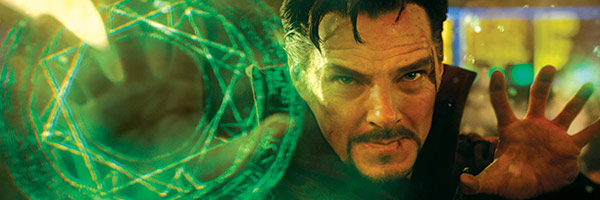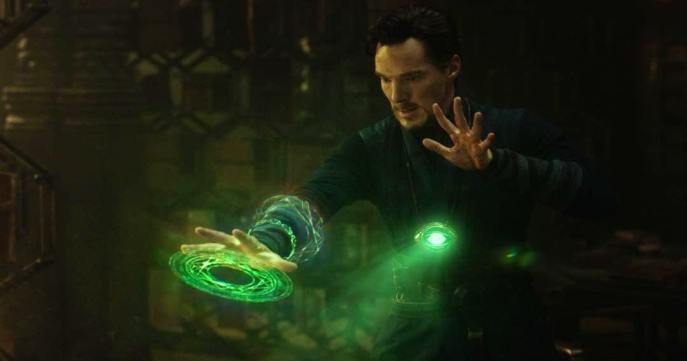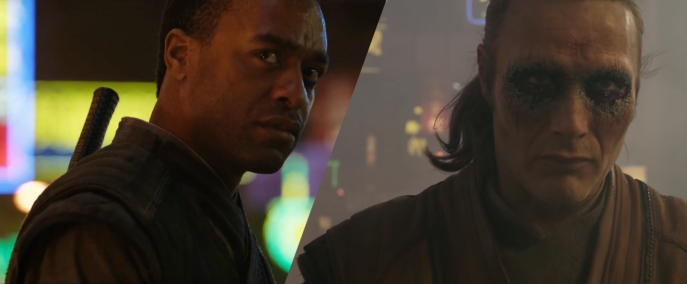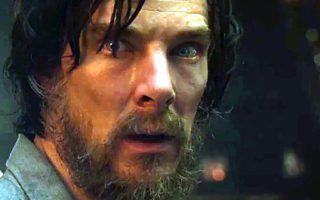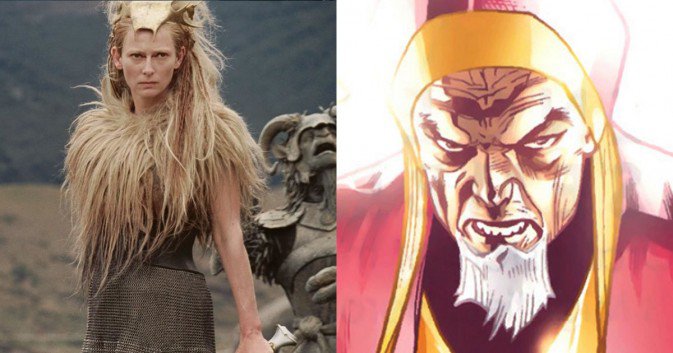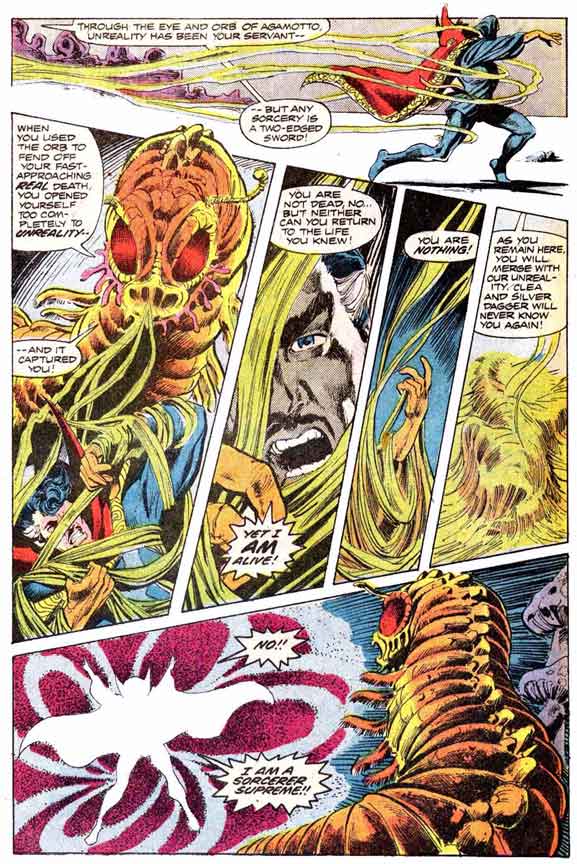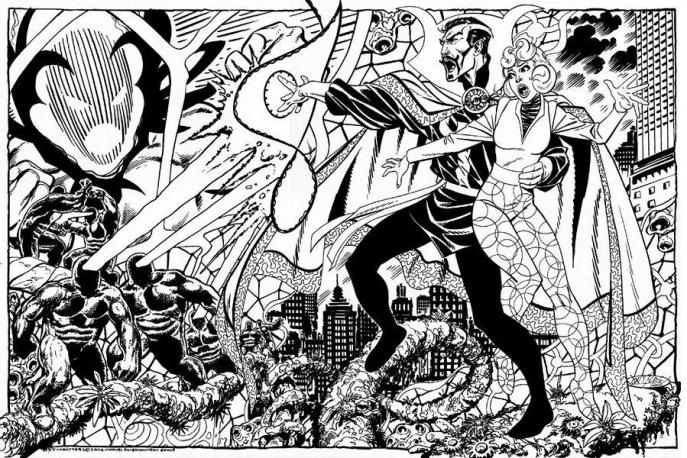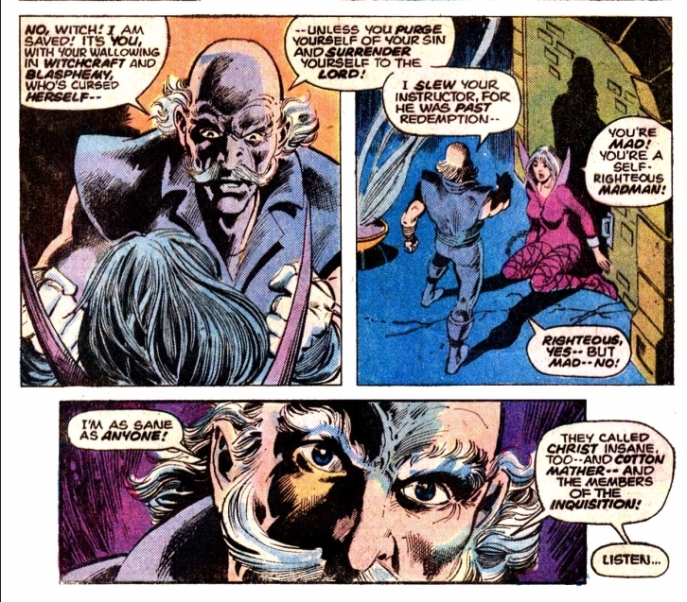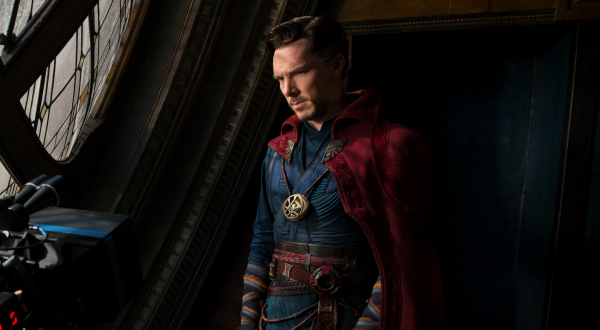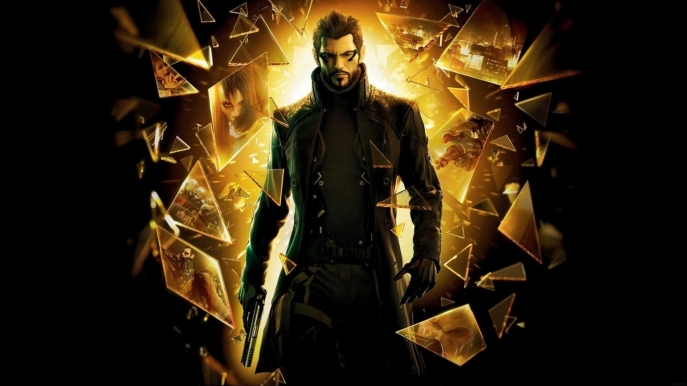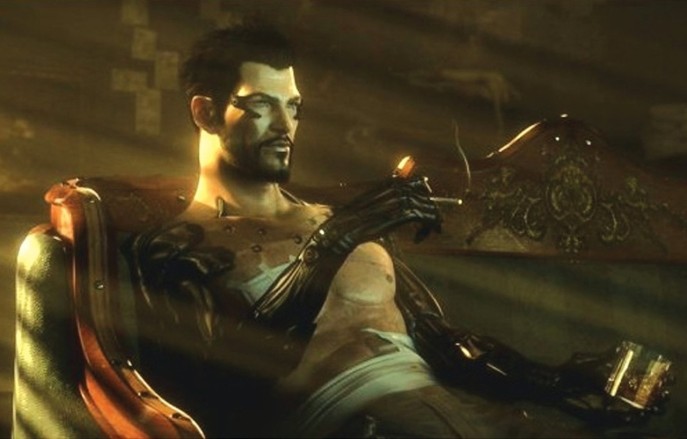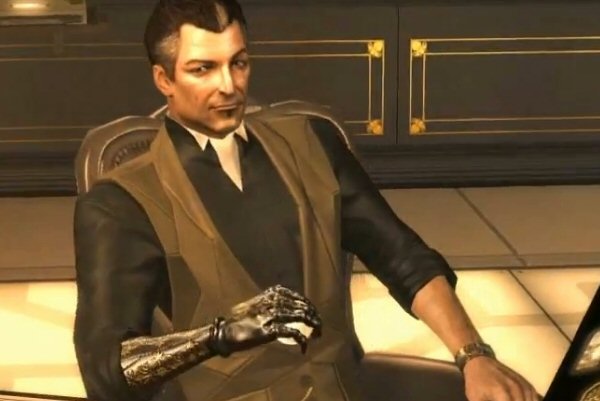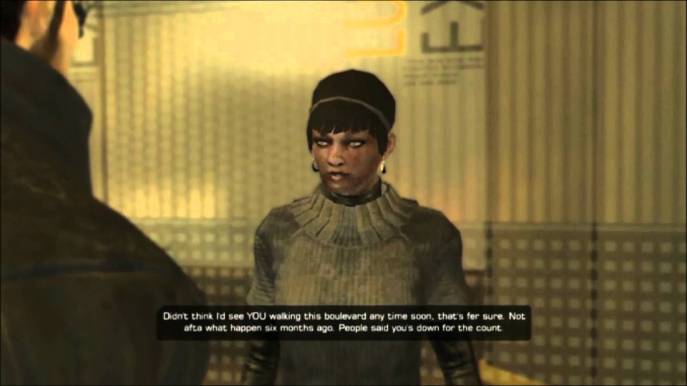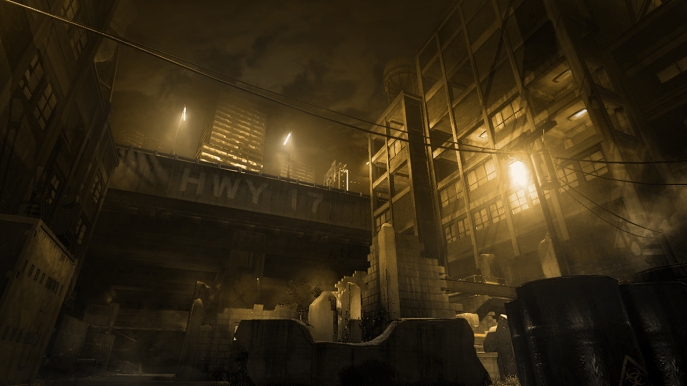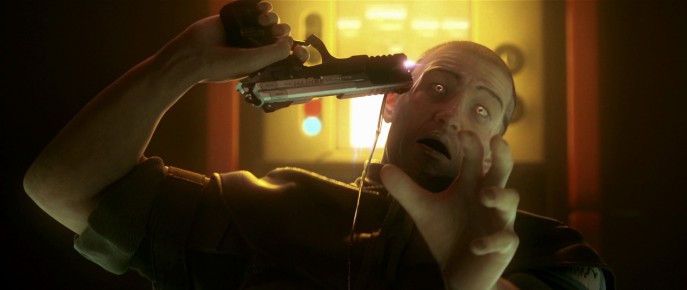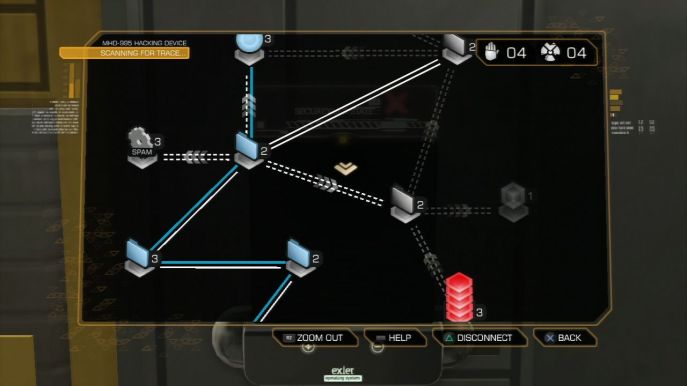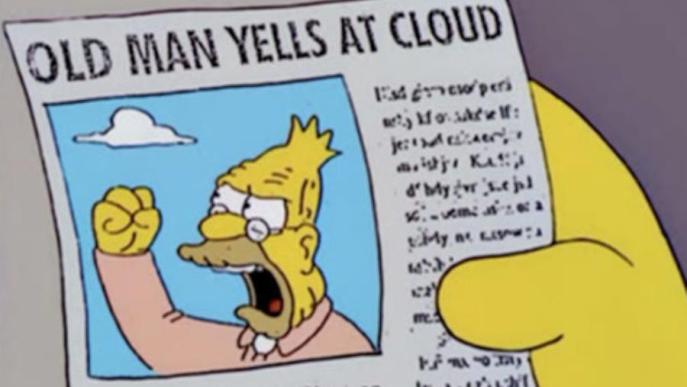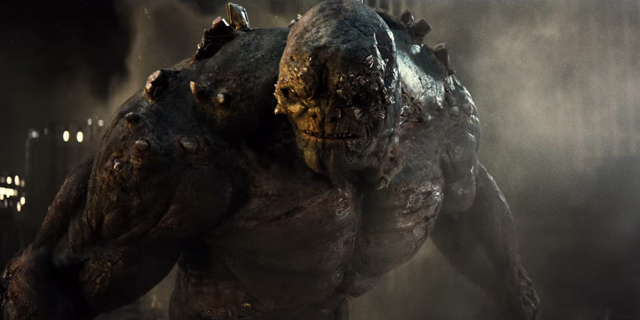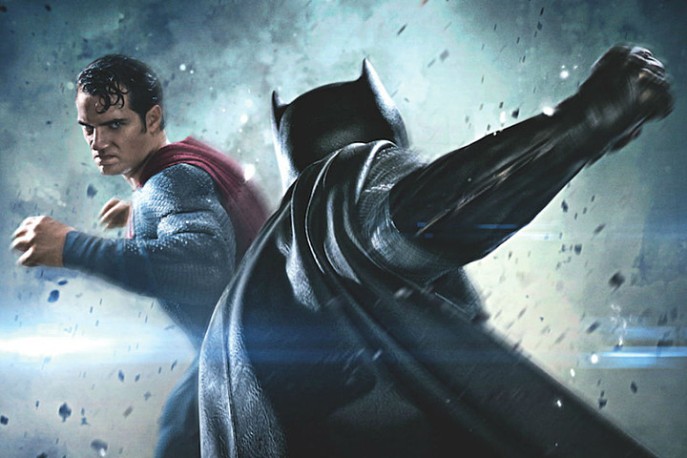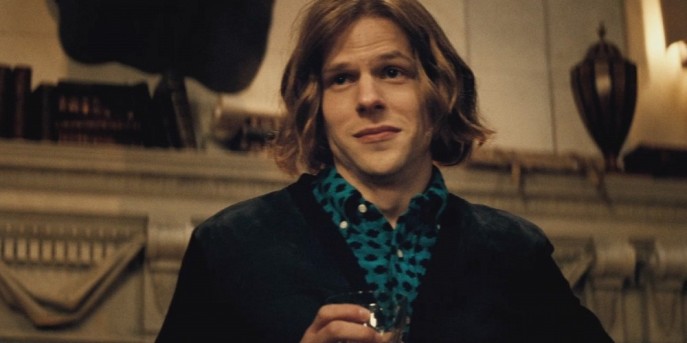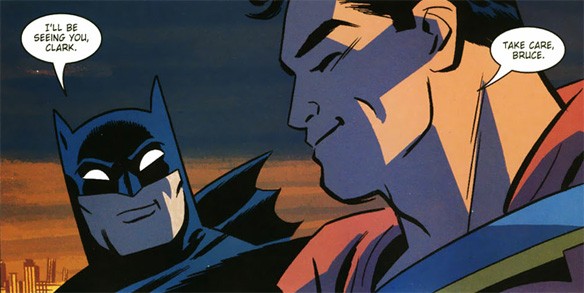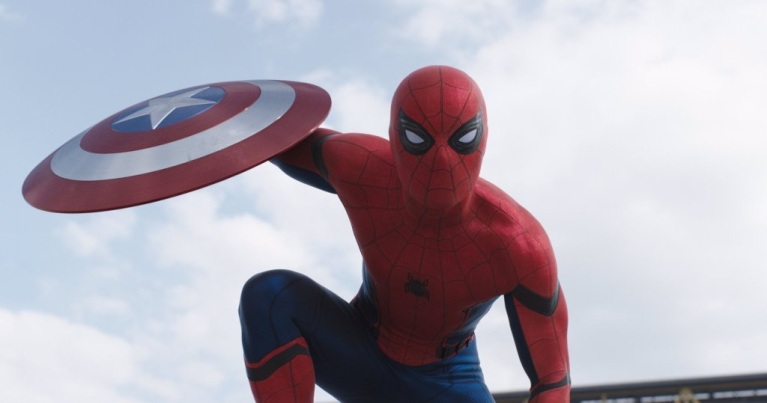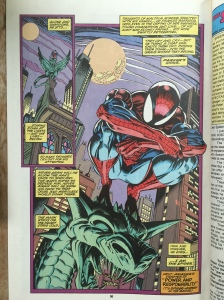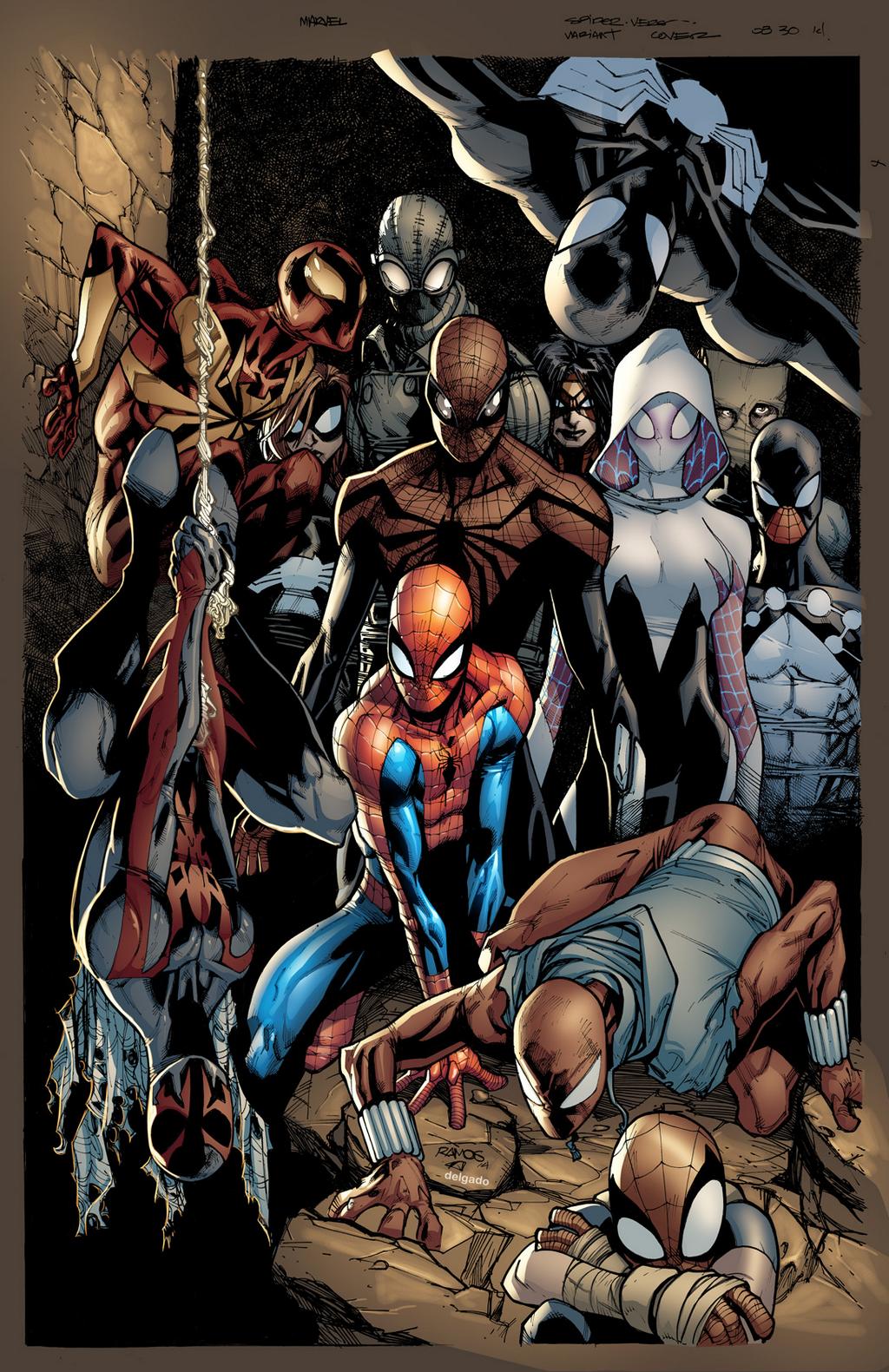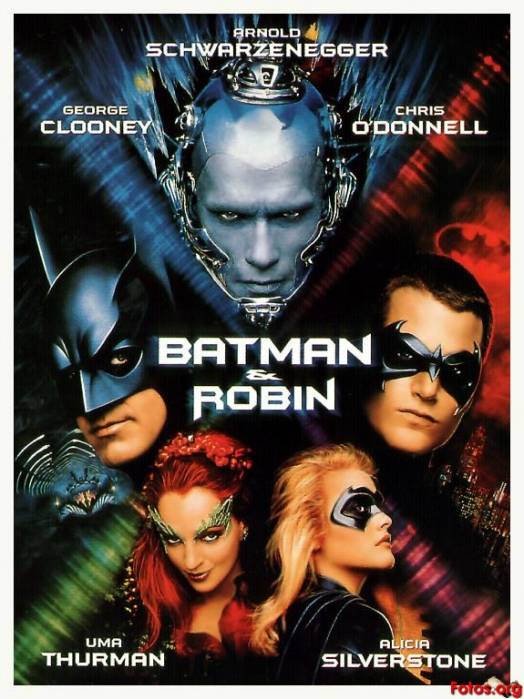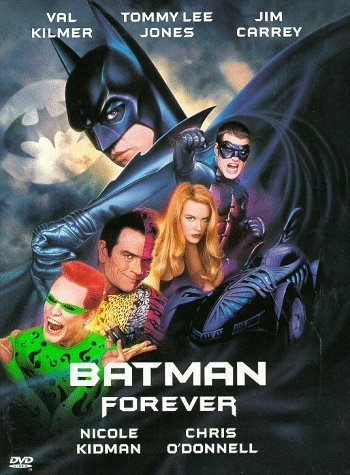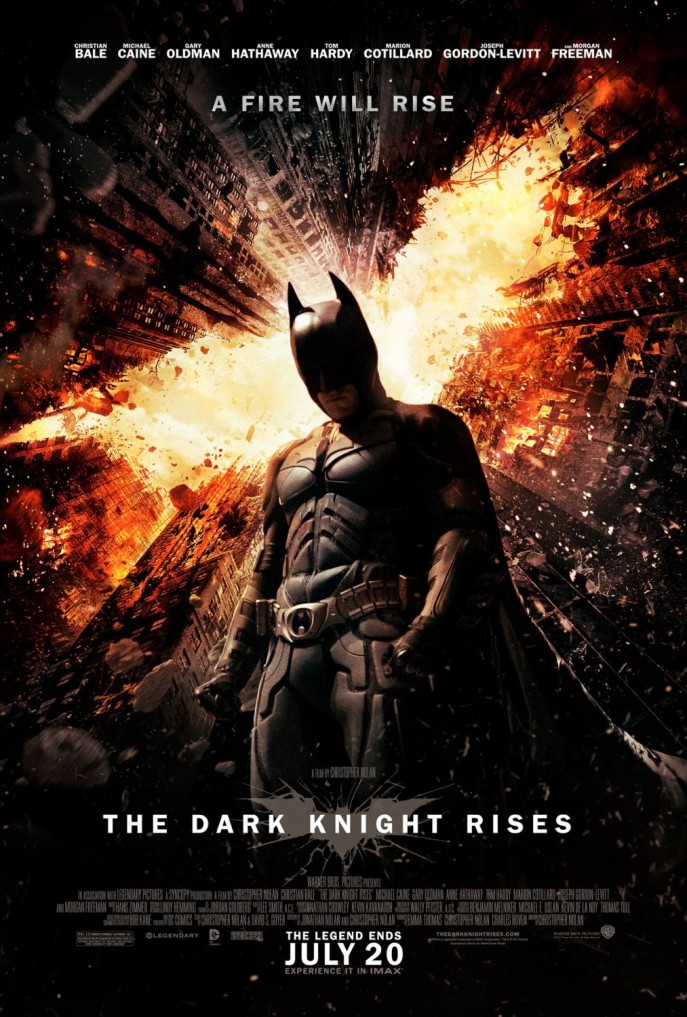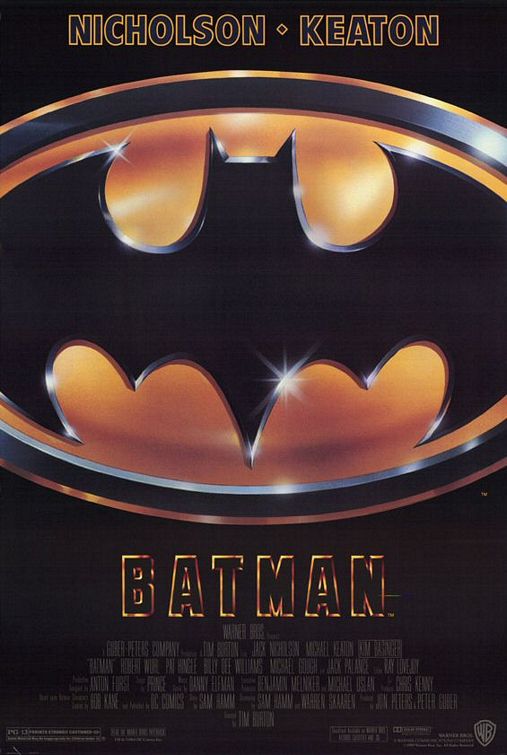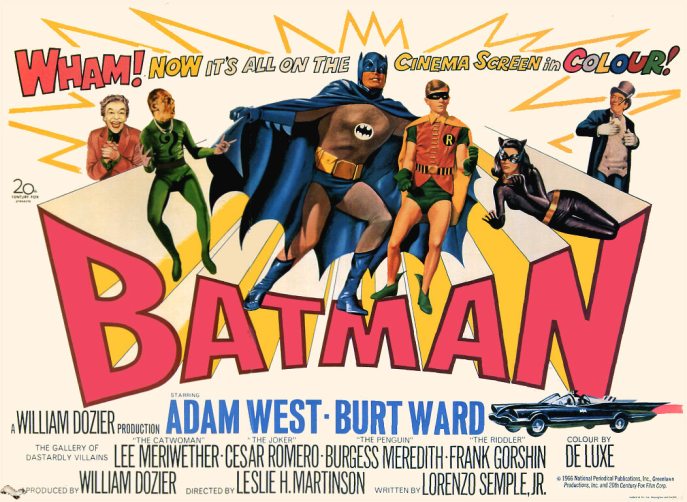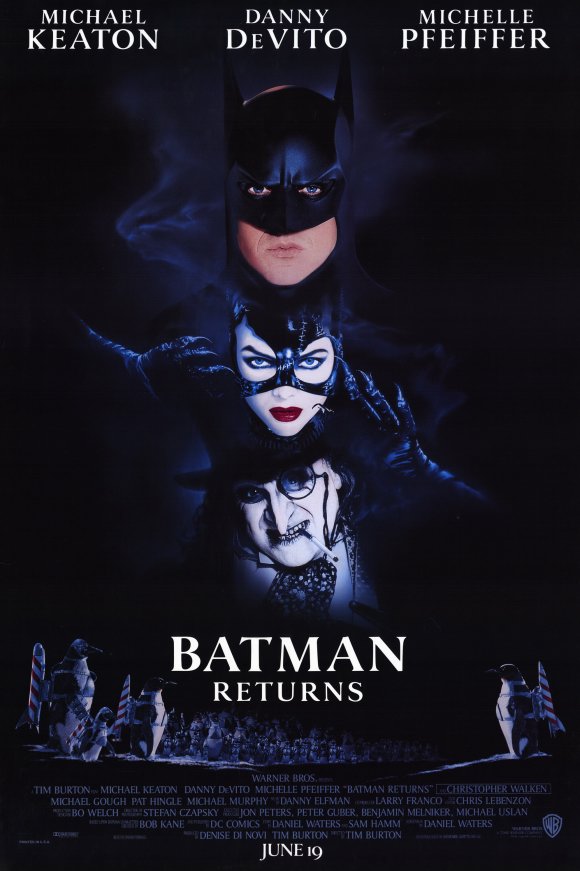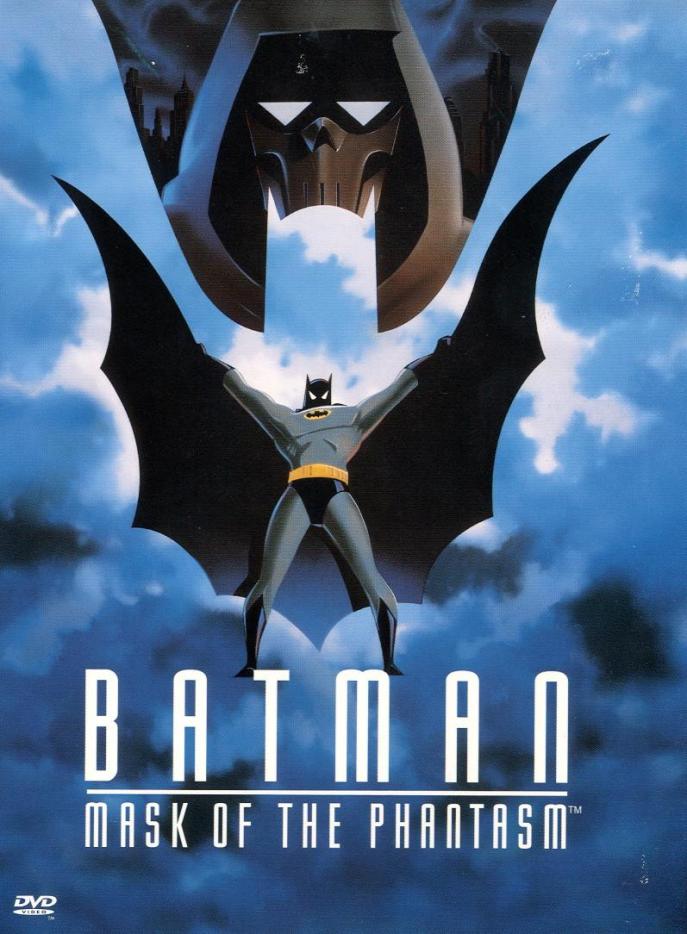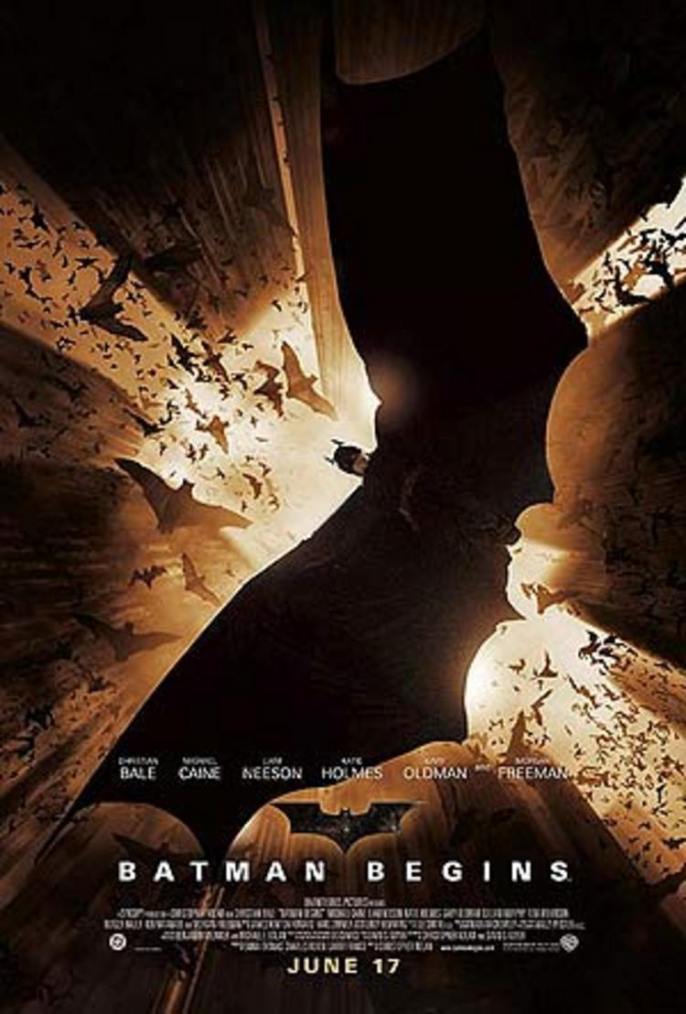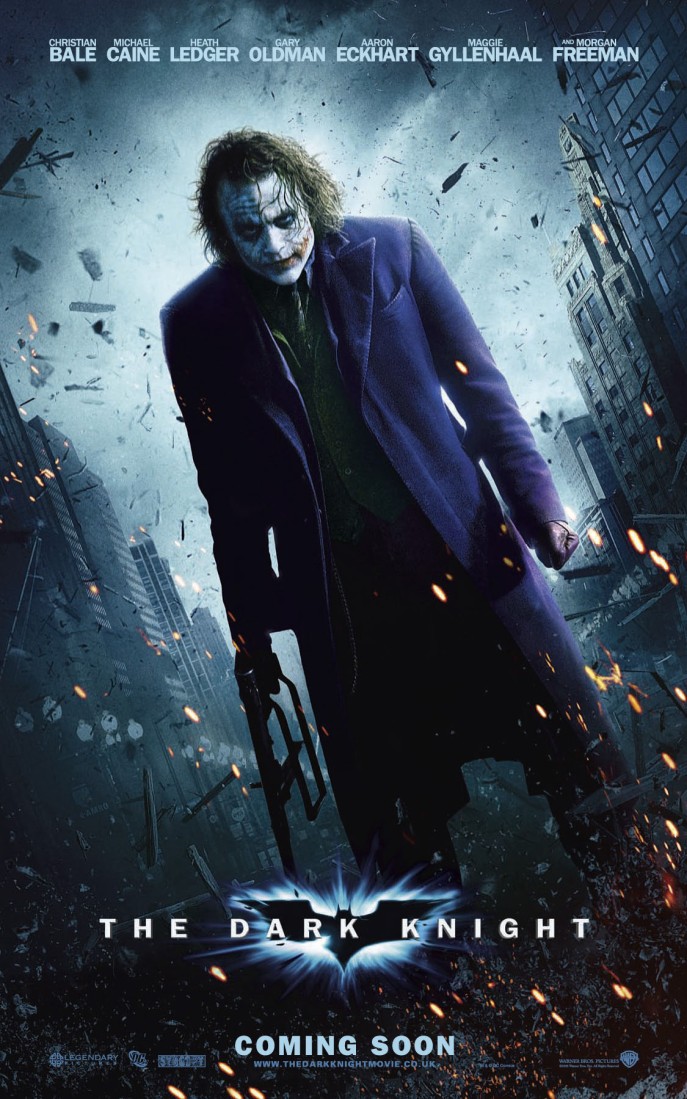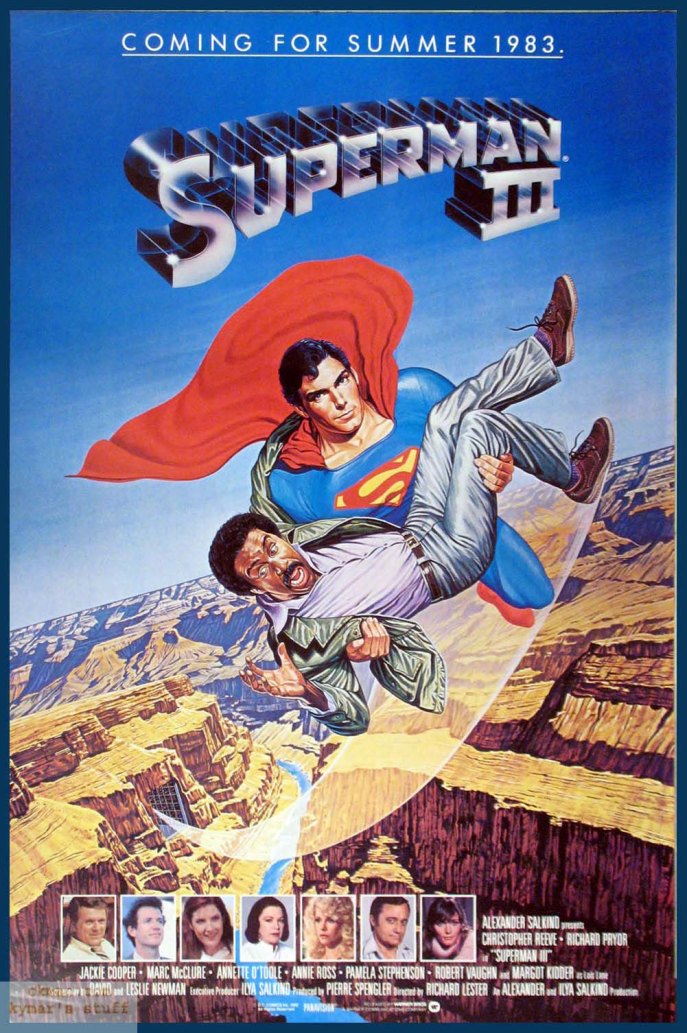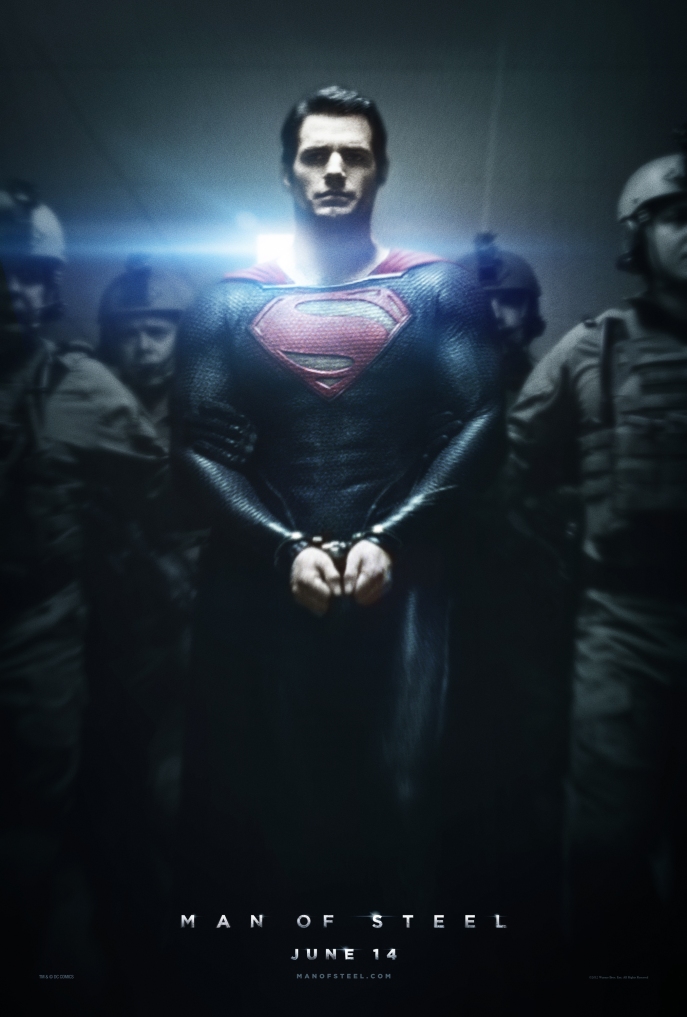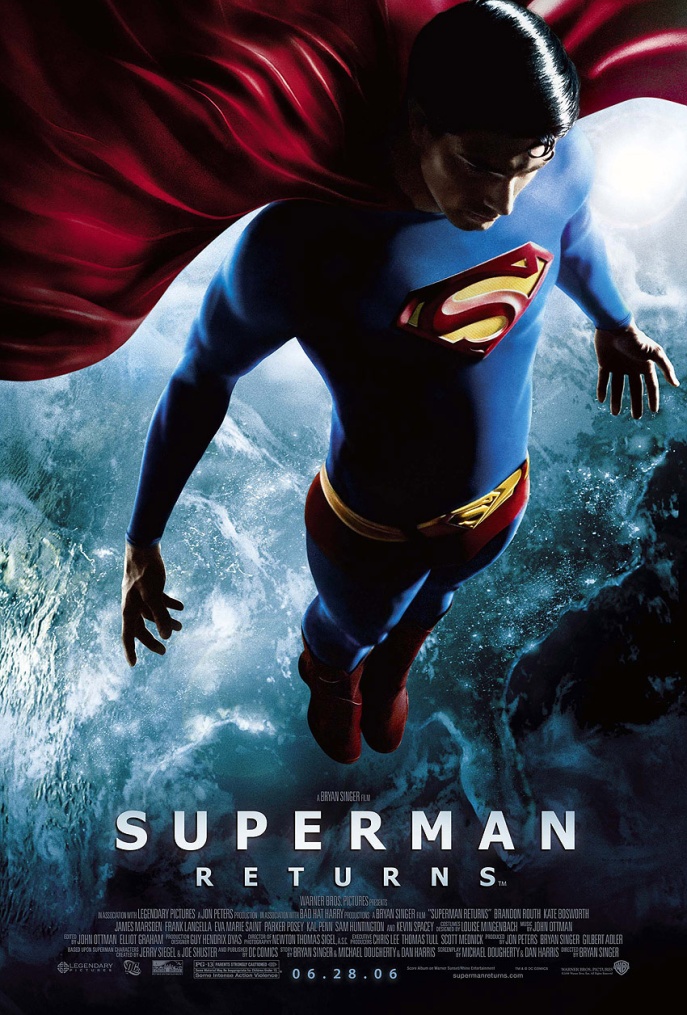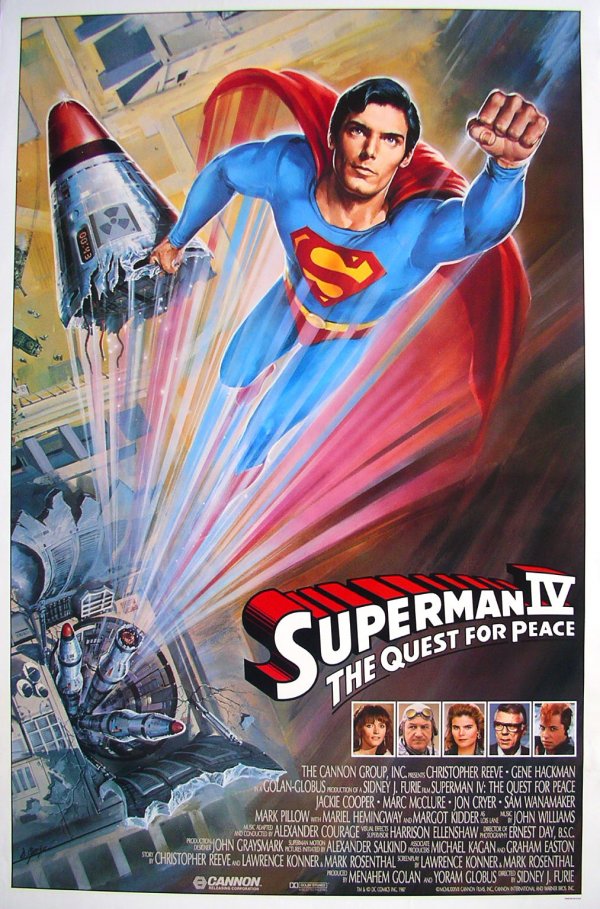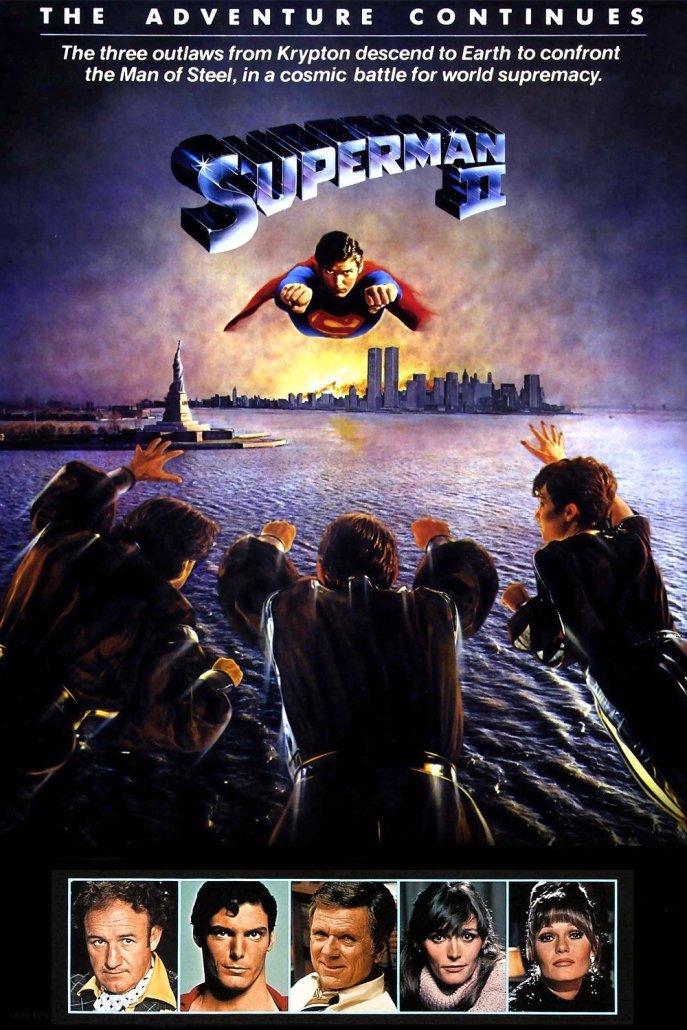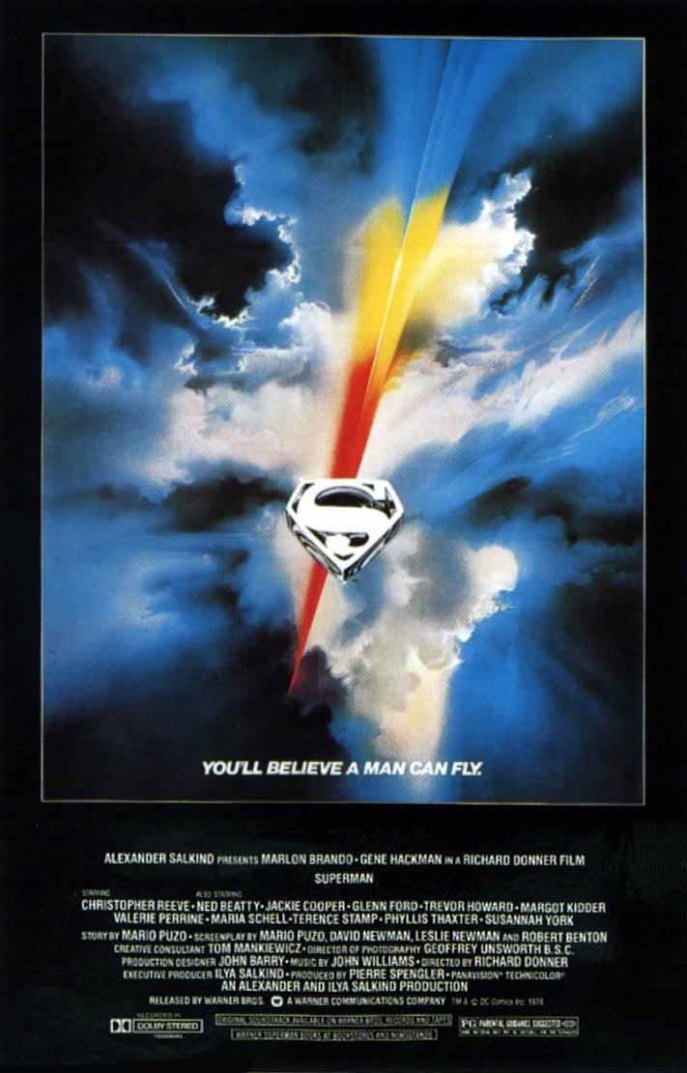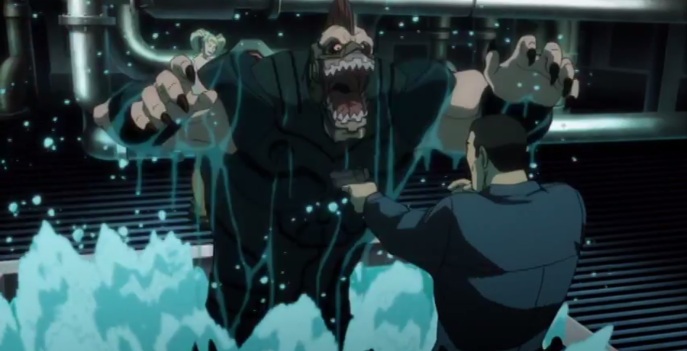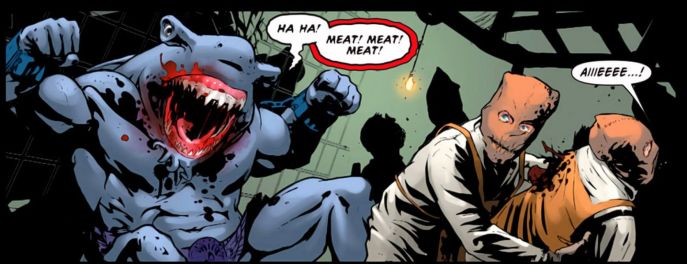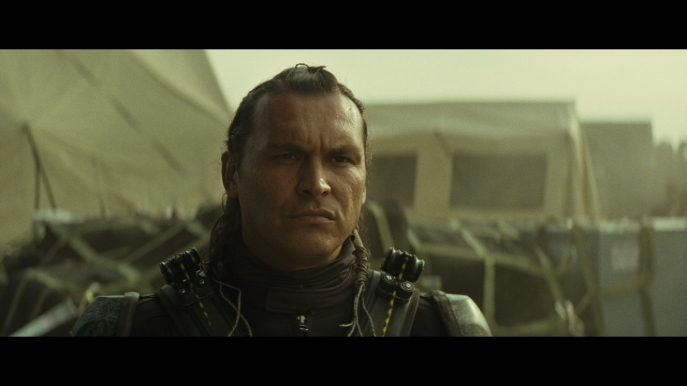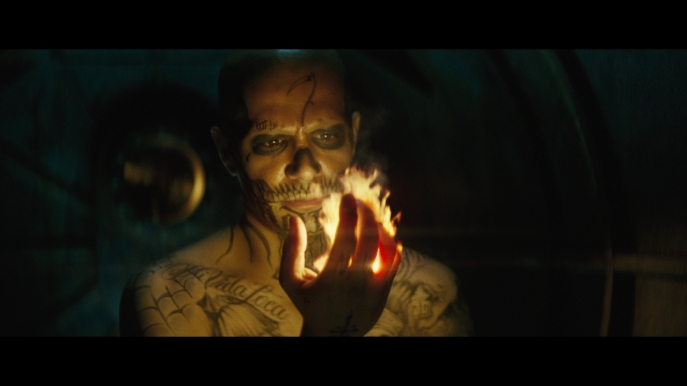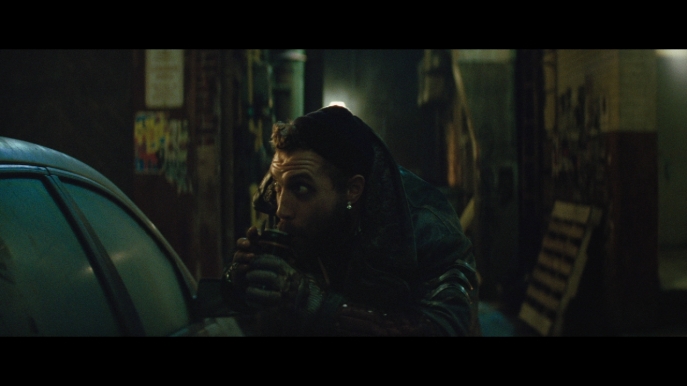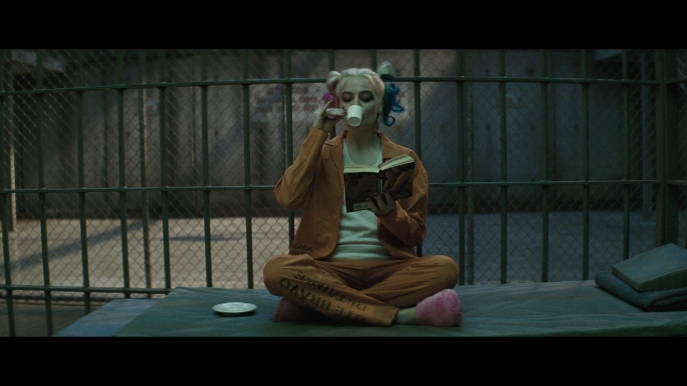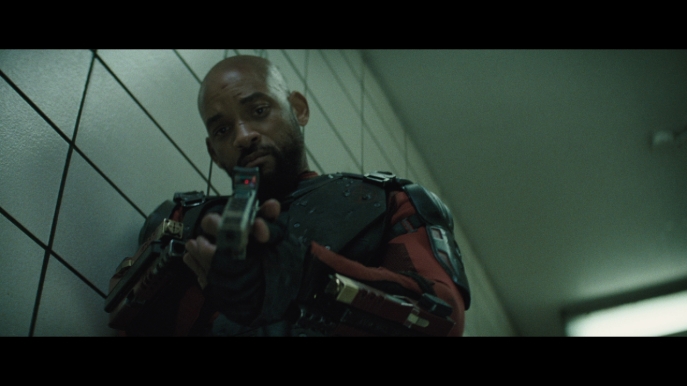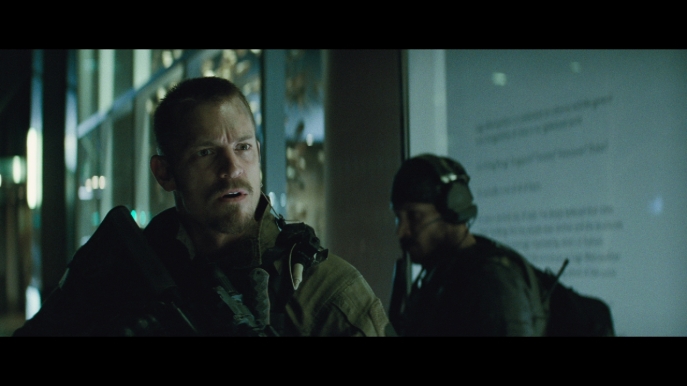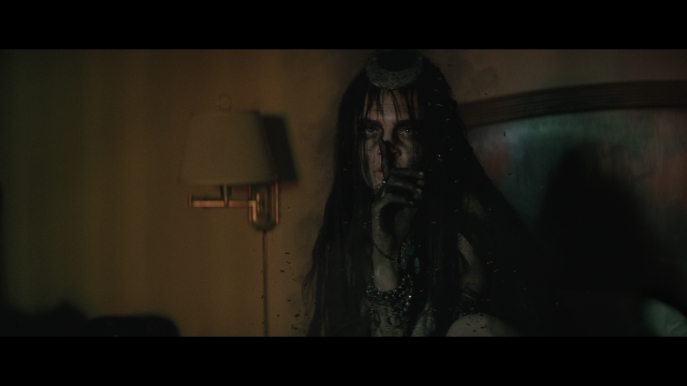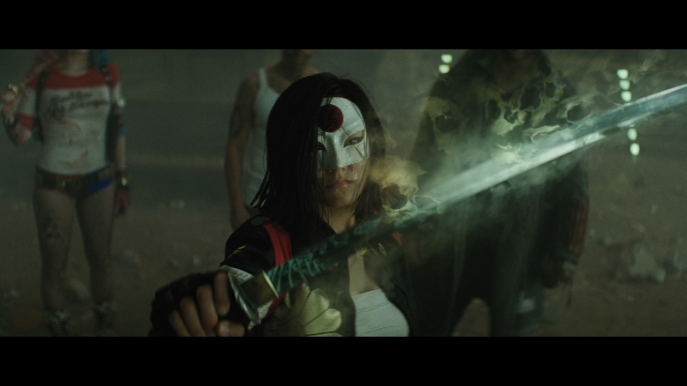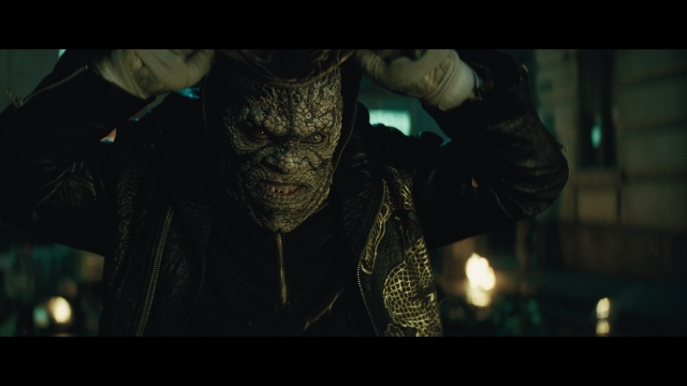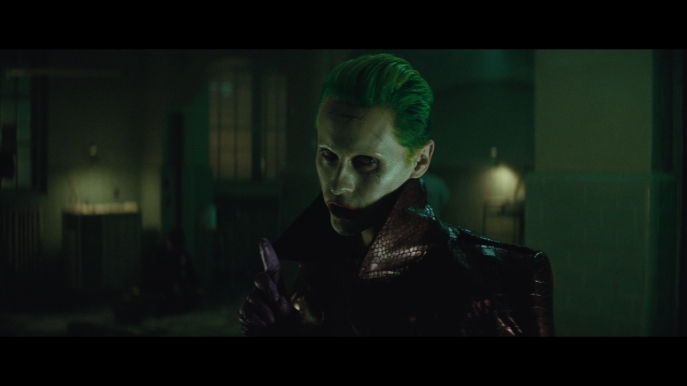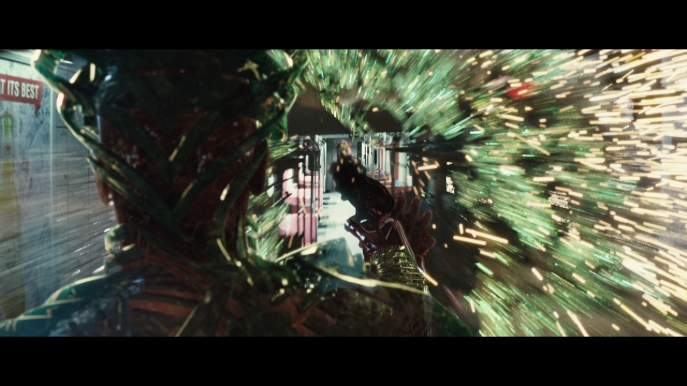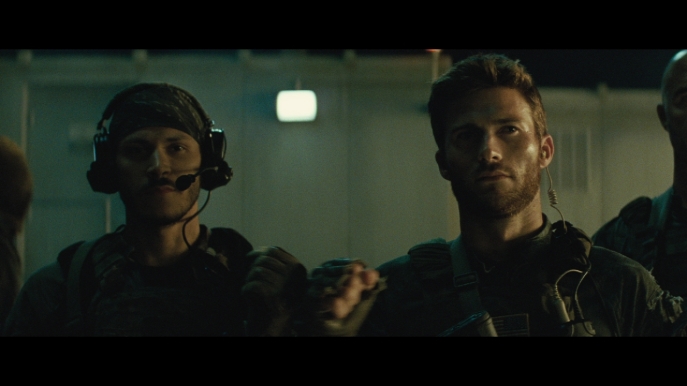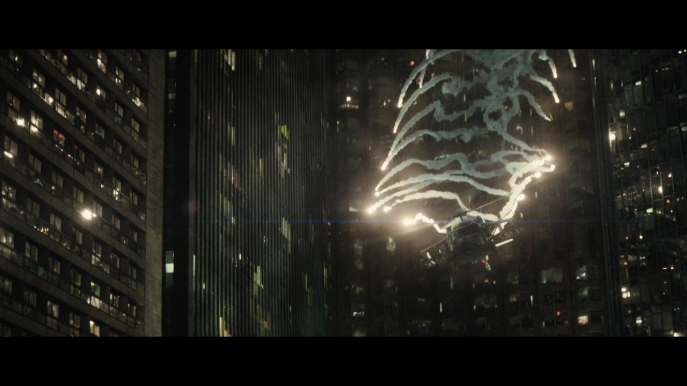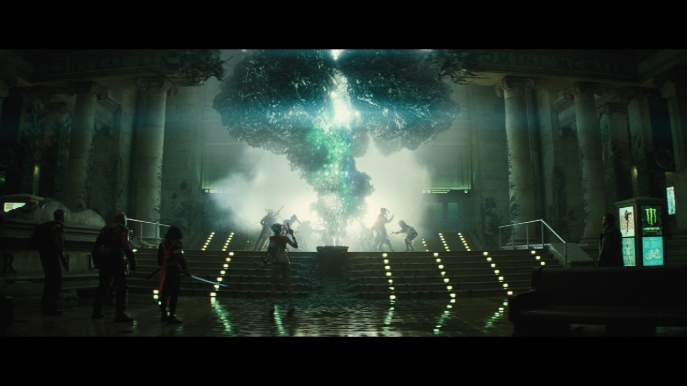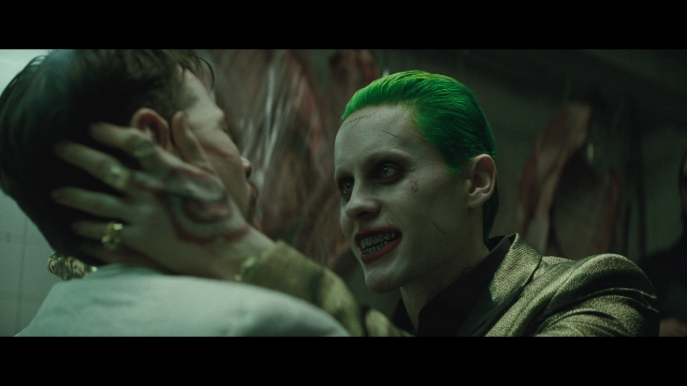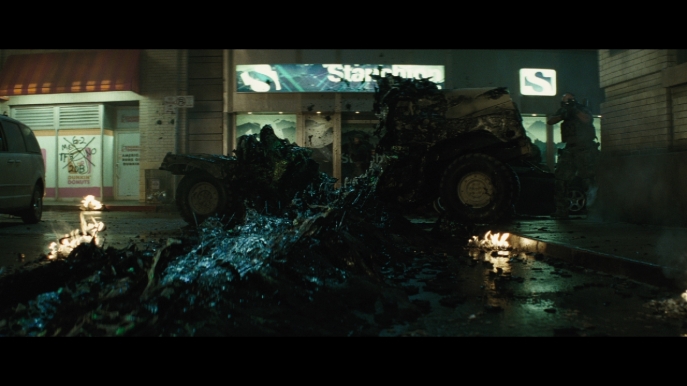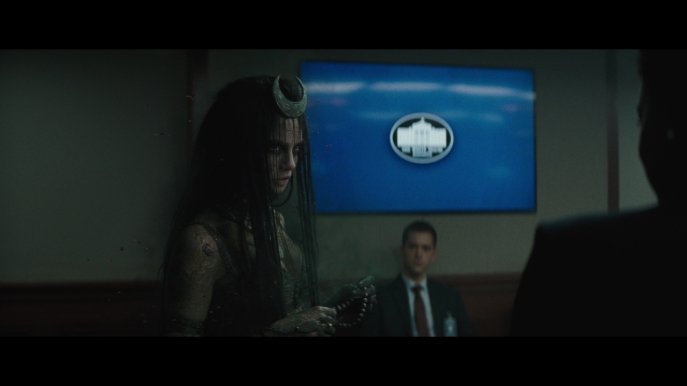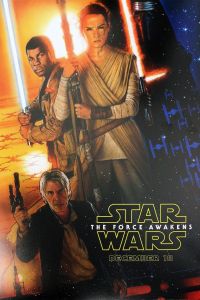So there’s going to be a Harley Quinn Movie (Gotham Sirens or Birds of Prey), another Suicide Squad movie, and likely a Deadshot spinoff.
SUICIDE SQUAD (2016) topped most people’s Worst of the Year movie lists, while I thought it was just mediocre. Maybe offensively mediocre, given the racial stereotyping of Killer Croc (Adewale Akinnuoye-Agbaje) and El Diablo (Jay Hernandez). It had a protracted, repetitious first act; the villain was worthless; it was riddled with plotholes; and the Joker was the worst ever put to film, but hey, I still thought BATMAN V SUPERMAN and X-MEN APOCALYPSE were worse.
The point is, SUICIDE SQUAD didn’t live up to the hype. It wasn’t as good as the animated movie in which they starred (BATMAN: ASSAULT ON ARKHAM). It wasn’t as good as any of the comics. And frankly, it oversimplified characters in a big way.
So in my usual way, I’d like to prove that I could’ve at least written a better version of the movie.
Now let’s be fair: SUICIDE SQUAD was reshot to high heaven, went through a gamut of 7-9 competing edits before being outsourced to a trailer company, and many of David Ayer’s ideas didn’t make it to the screen. That’ll make any movie suck. Who knows, maybe there was a fantastic version of the movie we never saw.
I don’t have those constraints, so maybe the unadulterated awesomeness I’m about to pull isn’t all that fair. ::shrugs:: Too bad.
- Understanding the Suicide Squad

Taskforce X –jokingly named “Suicide Squad” for its high mortality rate and deadly missions– was always designed as a way to play with the minutia of DC comics. It explored the smaller, more clandestine events that normal heroes were too busy to notice. It dealt with current social politics (Terror abroad, White Supremacy at home, etc.); government interagency skull and dagger tactics; and harrowing events too morally gray for most heroes. As an 80s comic, it was EXTREMELY anti-Reagan.
More, the team wasn’t a list of everybody’s favorite villains, but dopey villains nobody would care to see killed. EVERYBODY was on the chopping block. Here’s the rub: the writer was FANTASTIC, and he brought an X-Men-level of characterization to everybody. You CARED about the people who died, and suddenly, it wasn’t as fun to kill characters off anymore.
Here’s the point: Suicide Squad doesn’t fight the same glowy hole-in-the-sky thing that other movie superheroes fight. Instead, its job is to explore the depths of the DC universe. It also does a GREAT job at raising the stakes with death.
It’s kind of hilarious that SUICIDE SQUAD failed in all of those regards. Our version won’t.
- Who’s on our team?

The movie had…
Deadshot, Harley Quinn, Boomerang, El Diablo, Slipknot, Katana, Rick Flag, Killer Croc,
We’ll have…
Deadshot, Harley Quinn, Boomerang, El Diablo, Slipknot, Katana, Rick Flag, King Shark, and Enchantress
Reasons:
-King Shark is a Hammerhead shark monster. That’s fucking awesome.

-Enchantress is a key member of the comic team and is a mystical version of the Hulk. Seriously, she’s June Moon, a pacifist normally, and a magical live grenade as Enchantress. She deserves better than she got in the movie.

- But How Is Our Story Better?
We open on the fight between Superman and Doomsday from BATMAN V. SUPERMAN. It’s destructive as fuck, just like you’ve seen, but this time, we see the fight from the perspective of the military, who’s trying to intervene. Found footage style. Helicopters get lanced out of the sky by eye-lasers, others by falling debris, it’s hell.
We pull back to a secret government meeting reviewing the footage. The gist: “Superman died fighting Doomsday. How the hell can we prepare for the next metahuman attack?” In addition to the usual spooks, there’s a new intelligence agency: ARGUS, a firm designed to monitor metahuman actions. Its head, AMANDA WALLER, pledges to get right on it.
One Month Later
RICK FLAG JR., a soldier with an insecurity complex, leads a strike team -who might as well be his family- to a secret paramilitary lab. There, they’re surprised by overwhelming technological resistance, and Flag loses his whole team, barely escaping with his life. His C.O., Waller, preps a retrieval chopper and sends an order to “assemble Taskforce X.”
Quick cuts of the team being violent:
DEADSHOT shoots people.
KATANA stabs people.
KING SHARK eats people.
HARLEY joyrides with the Joker.
BOOMERANG robs a bank.
His partner, SLIPKNOT, robs the same bank.
EL DIABLO turns himself in.
ENCHANTRESS atomizes exorcists.
Now, all the team is behind bars in Belle Reve prison, which Waller has specially designed to hold them.
Short story, Rick Flag has to lead them and he doesn’t want to. He’s mourning his team, and he doesn’t think criminals have the honor or dedication of marines, and he thinks they’ll go rogue at the first sign of trouble. He’s probably right. Waller twists his insecurity into making him accept the mission.
Anyway, mission is simple: Taskforce X is to investigate this secret lab, Cadmus, and retrieve the package therein. Expect heavy resistance. The team makes light of it, and Waller punishes them to demonstrate that they’re on a collar. They misbehave, they get an electroshock. They go rogue, bombs implanted in their necks detonate.
Meanwhile, Joker’s in Gotham City, torturing and/or murdering people to find out what happened to Harley. She’s his. She has to come back to him.
Taskforce X (eventually to be called “The Suicide Squad”) makes it to the secret lab. Before the action, Boomerang talks his partner, Slipknot, into believing the neck-bombs are bogus. Slipknot tests this and dies.
RIP, Slipknot.
Meanwhile, Joker’s getting closer, discovering that Harley’s been conscripted into Taskforce X. He tortures/kills his way to finding out why. She’s HIS to play with, not anybody else’s.
Taskforce X makes headway into the base, their personalities rubbing each other the wrong way, each getting a shot of demonstrating their personalities. Flag and Deadshot rub each other the wrong way, a thin philosophical difference being all that separates them. Anyway, the team finds the package, a huge metal cylinder that only King Shark can carry.
Meanwhile, Joker makes it to Belle Reve Prison and opens all the cells. With Waller hiding herself in a panic room, Joker discovers a little green trinket of hers…
On the helicopter ride back to Belle Reve, Taskforce X accidentally opens the metal cylinder. What’s inside?
HENRY CAVILL.
That’s right. SUPERMAN.

The crazy bastards at Cadmus cloned Superman from blood lost during the fight with Doomsday. Flag explains that Cadmus figured the best way to contain Superman was to have one of their own, and to use it to hold the world ransom.
“But now it’s yours,” Harley says.
“That’s right,” Flag says. “Now it’s ours.”
Taskforce X returns to Belle Reve and find it’s a madhouse. Metahuman prisoners are rioting, guards are laughing to death on Joker’s Laughing Gas. Waller’s in a panic room, and orders the team to contain the riot and stop the Joker. They try –fighting dudes like Captain Cold, Clayface, and Parasite– but they’re overwhelmed. Flag makes a split decision and activates the Superman Clone, who saves them all, imprisoning most of the supervillains without a casualty (LOL MAN OF STEEL). Y’see, Cadmus programmed the Superman Clone to be a boy scout… but their boy scout.
That’s when the Joker walks in with Harley around his arm. He gives a Jokery speech and mocks the Superman Clone. When the Clone grabs him, Joker sprays him with Laughing Gas.
Damn, does that ever have a bad effect on Superman Clone chemistry.

Joker, wielding Kryptonite from Waller’s office, commands “Jokerized Superman” -who he christens “Bizarro” to start killing. Flag tries to stop him– Bizarro decapitates him in a blink of an eye.
RIP, Rick Flag.
Joker escapes with Harley and Bizarro.
Waller tries to detonate Harley’s neck bomb…
But Joker has Bizarro use his heat breath to deactivate it during the flight.
Taskforce X is done. No fucking way can they handle Superman, let alone a homicidal clone of him. Waller threatens to detonate their bombs, but they don’t care. Better a fast death than whatever the Joker has planned. It’s clear that none of Belle Reve’s other inmates are going to volunteer. Still, seeing tapes of the Superman/Doomsday destruction, Deadshot steps forward. He’s got a little girl that he doesn’t want to see hurt. He’s not the best guy in the world, but he’s got to be the daddy she’d want him to be. But Amanda Waller is personally going to pay for his daughter’s schooling. The other teammates come around, each with their own demands. The straggler, Boomerang, says that the mission is suicide. Deadshot grins. “Then we’re the Suicide Squad.”
Waller flies the team for where the Joker went: Gotham City.
Damn, it’s bad. Gotham’s wrecked to shit, Arkham Asylum is split open, and the crazies are pouring out. Joker laughs his ass off as Batman, hopelessly outmatched, fights Bizarro. The clone’s just letting Batman wail on him with everything he’s got… and he’s not taking a scratch. Bizarro casually backhands Batman, sending him flying into a parked car, breaking several of his ribs and knocking him unconscious.
For a moment, Bizarro’s stares at what he’s done. His eyes change from madness… to shock. Just as he starts to question his actions, Joker gives him another snort of Laughing Gas, reigniting the carnage. Joker laughs over his new kingdom, but when Harley tries to join in, he yells her into place. This is for HIM to enjoy. She’s just lucky to belong to him.
With his telescopic eyepiece, Deadshot sees it all from the helicopter. As the Suicide Squad parachutes in, he calls the shots: Get the Kryptonite from Joker and stop Bizarro, or die trying.
They land in a war zone. They try to ignore screaming people, but El Diablo just can’t do it. He puts out flames by absorbing them, saving people. King Shark saves drowning people, despite them looking tasty. Deadshot & Boomerang save people too. By slaughtering the Arkham inmates chasing them. ::shrugs:: It’s what they do.
Meanwhile, Enchantress takes on Bizarro, her magic the first thing that’s managed to slow him down. He wades through it as she lays on the power. He weakens, falling to his knees. Katana leaps from behind, preparing to decapitate him– his eyes shoot a freeze ray, encasing her in ice in mid-air. She hits the ground, shattering.
RIP, Katana.
Enchantress is so shocked that she reverts to June Moon, and sobs. Bizarro just laughs and flies away.
The others are fighting through Joker’s booby traps. Boomerang uses a boomerang to snag the Kryptonite from Joker’s hands… but as Boomerang cheers, Bizarro shatters the Kryptonite with a heat breath burst.
Without Kryptonite, the team is well and truly fucked. But Joker does them one better: He’s sitting on a nuclear bomb fitted with Laughing Gas. Gotham will be wiped off the face of the earth and the fallout’s going to give Metropolis a permanent case of the giggles. So, naturally, Joker laughs and orders Bizarro to kill the Suicide Squad.
Enchantress flares back out of June Moon, using her magic to try to contain Bizarro, but it ONLY slows him down. It’s just enough for the team to take turns distracting him.
Harley, meanwhile, is shocked that Joker could blow up Gotham. All her friends are there. Poison Ivy, Catwoman, Scarecrow, their hyena pets (yes, I am indeed stealing this moment from the classic BATMAN THE ANIMATED SERIES episode “Harlequinade.” That episode RULES SO HARD). Joker slaps her aside, telling her that he never needed any of them or her. She was just there for laughs. Harley, enraged enough to find her self respect, punches him back. Joker grimaces, liking where this is going. He draws a knife.
Meanwhile, the rest of the Suicide Squad is just BARELY keeping out of Bizarro’s grasp. El Diablo distracts him with fire. When he gets to close, Deadshot distracts him with a bullet. When he gets to close, King Shark punches him and runs, etc. It’s a losing war of attrition, and they all know it.
But Bizarro’s laughs seem to be quieting. He’s less manic by the second as the Laughing Gas wears off.
Boomerang, meanwhile, is nowhere to be found. He’s running along the outskirts, collecting fragments of Kryptonite in one hand, clutching a blowtorch in the other. He’s an idiot, but an idiot with a plan.
Harley fights the Joker: her gymnastics vs. his lethal gag gifts. Harley’s barely holding on, and he mocks her spinelessness every step of the way–

Bizarro finally catches King Shark by the throat. None of El Diablo’s flames, Deadshot’s bullets, or Enchantress’ magic can stop what comes next. Bizarro strangles King Shark to death.
RIP King Shark.
It hits the team hard. Sure he was a big shark-man, but he was THEIR big shark-man. And not that bad of a guy, once you got past the cannibalism.
Boomerang, meanwhile, finishes welding a KRYPTONITE BOOMERANG. It all comes down to the character from down under. *Sponsored by Fosters.
Joker’s got the upper hand on Harley, but just as he’s about to kill her, she grabs her mallet and swings it into his gut, knocking him down a hill of rubble and probably breaking a few ribs too. Harley stands tall over him, gripping her hammer. “I’m breaking up with you. Puddin’.” Then it hits her: “OMIGAWD, TH’ BOMB!” She runs off to diffuse it.
Joker just lays there, bleeding. His eyes roll to the side and he spots… an ice cream truck.
Meanwhile, Bizarro’s figuring out that he can ignore people’s attacks. He chuckles, tears streaming from his eyes. The Laughing Gas is wearing off, but it’s still affecting him. He wades through El Diablo’s waning flames.
Harley, meanwhile, struggles to diffuse the nuclear bomb’s countdown, Boomerang yelling unhelpful advice. “I’m a therapist, not a nuclear physicist!” Harley screams.
Just as El Diablo braces for Bizarro to grab him, someone calls out: “Hey, moron!”
Bizarro turns.
It’s Deadshot, standing in front of the people of Gotham, their terrified, bleeding faces covered in dust. Deadshot asks if this is something Superman would let happen. If Superman would ever knowingly let people suffer.
Boomerang’s poised with the Kryptonite boomerang, just in case.
Yeah, Harley adds, standing sincerely. People make mistakes all the time, but it’s how they recover from them that counts.
“THE BOMB, YOU BLOOMIN’ IDIOT!” Boomerang screams at her. “THE BOMB!”
“Oh yeah!” she says, and dives back into the wires, the countdown timer entering the single digits–
Bizarro steps past her, grabbing the bomb. “You know,” he says to them. “You’re not all that bad.”
Deadshot, El Diablo, Enchantress, Boomerang, and Harley exchange glances. They’re all pretty bad. Hell, they look it.
A tear slips from Bizarro’s eye as he hefts the bomb. “Up, up, and away,” he says.

He’s off like a shot. The Suicide Squad watches as he flies into space and explodes.
RIP, Bizarro.
A reverent moment of silence. Boomerang chuckles: “Chump.”
Harley laughs nervously, “So, umm… all’s forgiven right?”
Enchantress reverts to June Moon and punches Harley in the face. “Yep. All’s forgiven.”
Waller tells the group that the mission isn’t over. They still haven’t dealt with the Joker.
Deadshot notices the ice cream truck driving away. He casually aims and shoots at it. After a second, the truck crashes.
Waller tells him that’s not good enough.
El Diablo nods to where Batman had been laid out. Batman’s gone. “Somebody’s already on it.”
On the helicopter flight back, the team muses that now they’ve saved the city, they must get benefits. A parade, women, booze, whatever superheroes get. Waller agrees to make their cells more comfortable. But she does leave a case of beer in the helicopter for them.
“You guys,” Harley laughs. “We took out Superman!” They drink to that.
Meanwhile, Joker, battered and bloody, struggles to get himself out of the overturned ice cream truck. He mutters under his breath, swearing revenge. He’s got another nuke he’s been just itching to use. “Tell me where it is.” Joker looks up. Batman’s standing on top of the truck. He reaches for Joker–
Cut to black.
Mid-credits (fuck it, Marvel doesn’t own fanservice): Waller meets with Bruce Wayne, both threatening each other. Wayne threatens to expose the Suicide Squad -half of Gotham is conspiracy-theorizing anyway. Waller threatens to expose Wayne for being Batman and for setting up his childishly named “Justice League.”
Post-credits: Waller watches a press conference as Lex Luthor is released for prison and announces his bid for the U.S. presidency. Waller. “Looks like the Suicide Squad has a new mission.”
5. Fun, huh?

The idea here is that we make the most of the DC universe, establish lots of villains for future movies, do more with the current DCEU narrative: figuring out what to do in a post-Superman world.
It plays against tropes, the Suicide Squad lives up to its name, it makes better use of the cameos, it’s a little more streamlined, and it hypothetically better earns its emotional beats.
The post-credits also hint that Suicide Squad will be involved in political skullduggery, as they were in the classic comics. Again, this was an anti-Reagan comic, so wouldn’t it make sense for the movie franchise to be anti-Trump?
6. Lasting issues
All that said, there are a few lingering issues:
-Two prison breaks, although they’d have different feels, it may feel slightly repetitive
-ALL of the Nolan Batman movies had prison breaks, as this does.
-some will be bothered by Harley being chained to Joker for the latter half, but that’s kind of character: the abused girlfriend slowly breaking out from the abuser’s shackles.
-Waller’s sidelined at the end, but hey, she could be their eye in the sky or something.
6. David Ayer
David Ayer’s a solid director with an incredibly specific style -a style that might not be suited for broad appeal (RE: Ayer’s sexist and racist undertones). It also didn’t help that he only had 6 weeks to write a script that would be retroactively wedged into the DCEU.
That larger problem, though, is that Ayer is new to mega-budget superhero movies, and he flat didn’t have a language for it. As such, he reverted to trope. He made a movie almost wholly reliant on flashbacks and exposition when its predecessor, BATMAN: ASSAULT ON ARKHAM (a superlative Suicide Squad movie), demonstrated all that was necessary was to demonstrate character through action.
More, because these are supervillains, their adventures would probably be better-tailored to heists, assassinations, and sabotage over generic stop-villainous-plot stories. Their adventures can be small and they can get big, as I demonstrated. This could’ve been the size of a MISSION IMPOSSIBLE movie, or even a FAST AND FURIOUS movie.
Despite Ayer being a fan of Suicide Squad comics, it just seems like he didn’t have the correct imagination for the job.
Sure, I may be talking out my ass, as I don’t have 6 weeks, to write a script out of this, but by the same token, had I pitched a script to Warner Bros., I would’ve read the tea leaves for what WB would probably want long term. I would’ve known that creating a “different” comic book movie had to extend beyond visuals. I would’ve known that audiences are clamoring for an honest-to-God great villain. I would’ve pitched this to follow BvS or, failing that, MAN OF STEEL, because audiences are all about continuity these days. I would’ve pitched with a sequel in mind, because studios like relative financial certainty. I would’ve pitched this exact plot, because it’s the best way to utilize the characters on screen and on the page.
But then, I just read a ton of comics and watch a ton of blockbusters.
I’m just talking out my ass.
RIP, Sadcyborg.




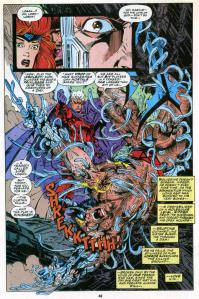
_1.jpg)











